Jul 27 2017.
views 7139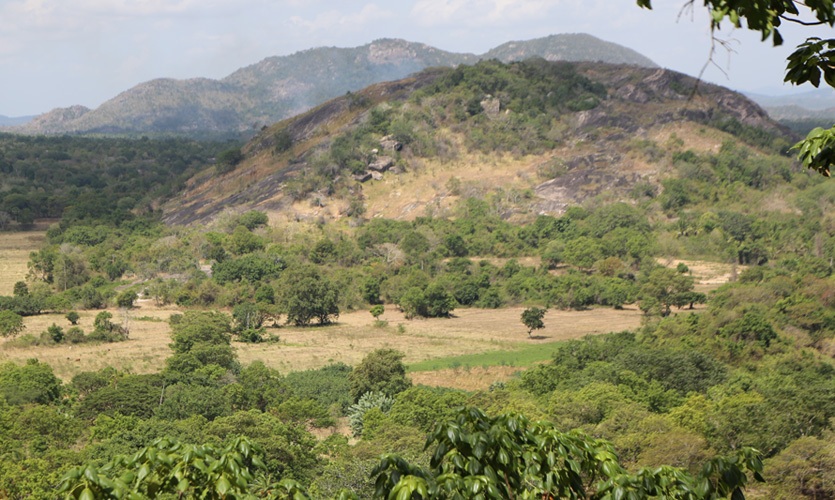
Sri Lanka was a land with a significant geographical setting, natural resources and a rich culture that attracted traders more often. Back then, it prospered with reigning kingdoms and the respective kings who fought for their land during different eras. Sri Lanka was home to nine kingdoms that introduced various cultural influences, technological advancements and engineering expertise for the future generations. Yapahuwa is its fourth kingdom ruled by King Buvanekabahu I, who established it with an aim to protect the sacred Tooth Relic.

Yapahuwa was our first destination in a series to explore the fallen kingdoms of Sri Lanka and their associated archaeological sites. The city is situated approximately 140 kilometres towards Kurunegala along the Giriulla-Wariyapola road. With the help of our area correspondent Sajeewa Kottagoda and Gamini Munasinghe, Site Manager at the Department of Archaeology, Yapahuwa, we visited these historic sites.
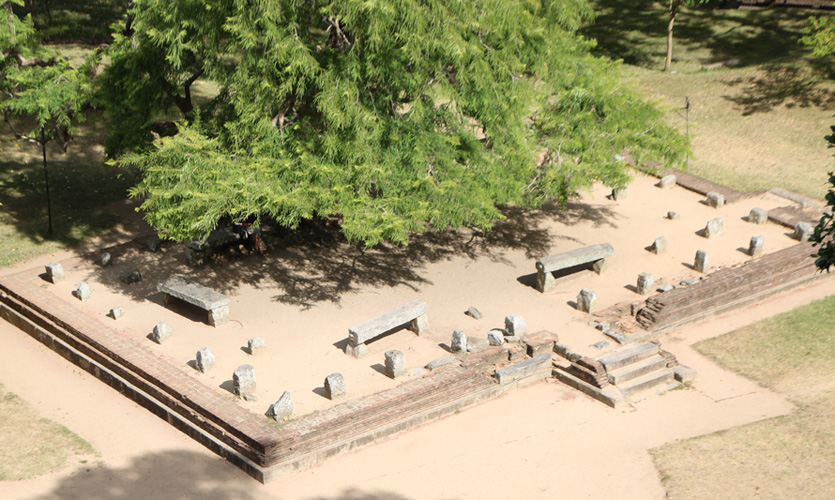
History
The history of the North Western province dates back to the times of the pre-historic man as there’s evidence of early civilisations. As such the province is regarded as an area that has a complex network of elements which depicts how early civilisations utilised resources such as water. Research has also discovered fossils dating back to the Jurassic period at Thambowa, Pallama and Andigama areas, which makes this province even more ancient that we thought. This is the province in which the Yapahuwa Kingdom once existed.

Yapahuwa is situated in the Pahala-visi-deka Korale of the North Western province and is approximately four kilometres southeast of the Maho railway stations, mid-way between Kurunegala and Anuradhapura. If you wish to travel by train, get off at the Maho station and take a bus or if you are more adventurous than that, simply trek the scenic countryside.
Dating back to 1273 AD at the time of King Buvanekabahu I, Yapahuwa was the governing seat of Sri Lanka and home to the sacred Tooth Relic. In order to protect the sacred Tooth Relic, the Yapahuwa Rock Fortress was built. At the time, military leader Subha prevented invasions from the Magha forces from Kalinga.
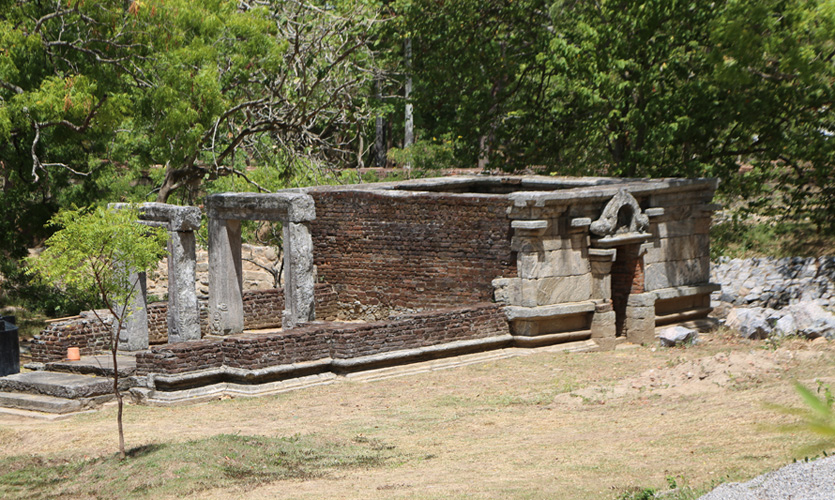
Yapahuwa Rock Fortress
The Yapahuwa Rock Fortress bears a close resemblance to the Sigiriya Rock Fortress when looking at its plan. Both establishments were built with the common objective of protecting its people and sacred relics from foreign invasions. Yet they both have distinct features. While Sigiriya is protected by a wall that runs around its boundary, Yapahuwa has a wall that protects the inner city. Sigiriya has four entrances while the Southern entrance at Yapahuwa is permanently blocked. This is because Yapahuwa was built in such a way so that the King and his warriors only had to keep an eye on three entrances. Hence it was called a ‘three-way entrance’ or ‘thun-wasala’.
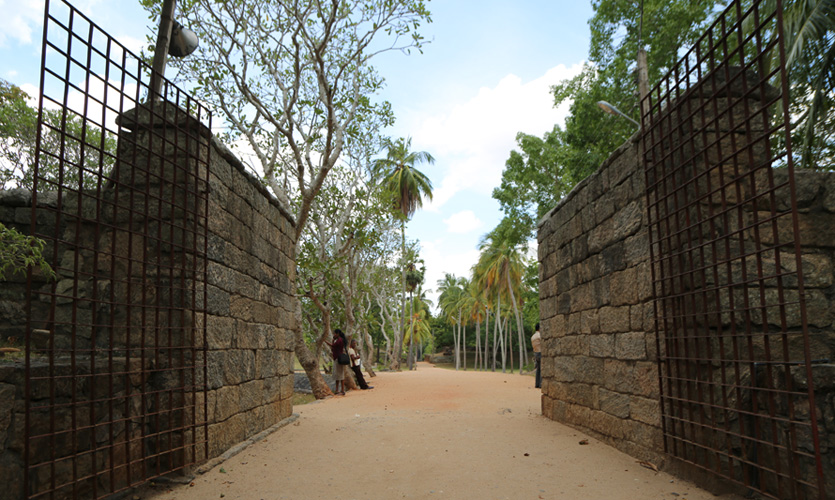
Since the Southern entrance was already blocked, the Tooth Relic was even safe. Today we could see remains of the palace which is relatively smaller in size, a courtroom or ‘sabhashalawa’ – the place where the King held his meetings and remains of a marketplace as well. What is quite significant about this Fortress is that the palace is situated at the base of the temple while Subha’s palace was built at the summit of the Yapahuwa rock since he made use of the location as a point of military defence. Hence the Yapahuwa Rock was named as ‘Subha’s rock’ or ‘Subha pabbata’.
Decorated Staircase
When we think of Yapahuwa, the first thing that comes to mind is a flight of stairs and a majestic entrance. An interesting fact about the middle and the upper flight of stairs is that they are both built at a 70 degree angle (the next time you visit Yapahuwa you would see how difficult it is to climb up and down). The reason behind this construction was that the King wanted to ensure the safety of the Tooth Relic. Therefore it’s quite difficult to run upwards unless you literally crawl on all fours!
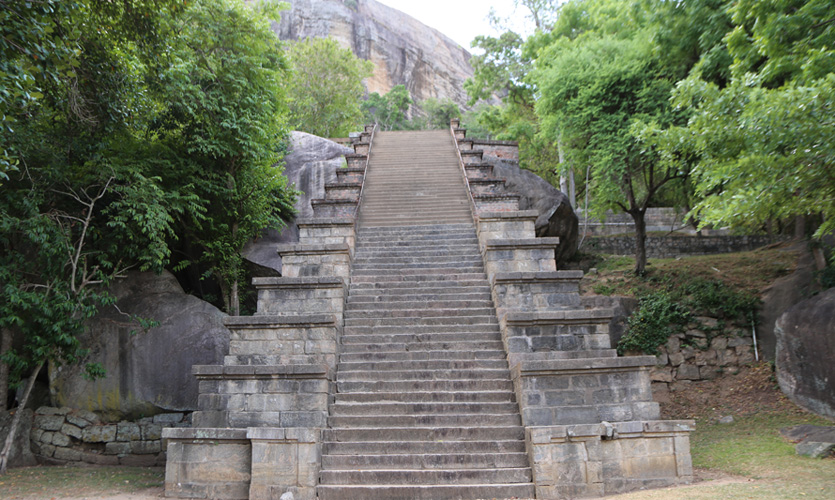
Just before you reach the upper tier which once housed the Temple of the Tooth Relic, you come across the ‘Decorated Staircase.’ This was found by H.C.P Bell – the first archaeological commissioner who held his post from 1810-1811. He was known to have discovered various such majestic palace entrances during his work. The Decorated Staircase has some interesting sculptures including that of the Yapahuwa Lion and dancers known to be inspired by the Kandyan perahera.
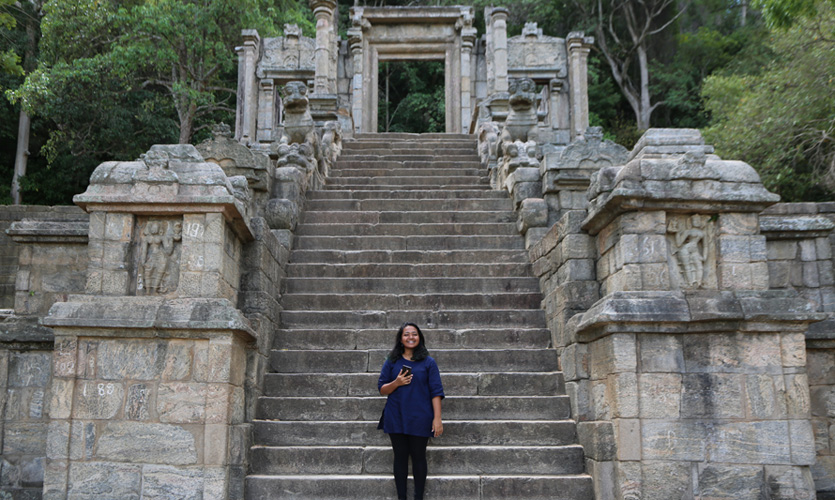
Yapahuwa Lion and the Chinese influences
If you have taken a closer look at the Rs. 10 note, you would see the image of a lion. That is the Yapahuwa Lion. But what is quite unique about this lion sculpture is that it is a hybrid between a lion’s face and a dragon’s body. Legend has it that although the sculptures were done by local craftsmen many of its designs were influenced by Chinese culture. Several other archaeological excavations have proven that Buvanekabahu’s hill-top kingdom had close diplomatic ties with the Chinese. During early excavations, several Chinese ceramics have been found and they were known to be some of the finest specimens found in the island.
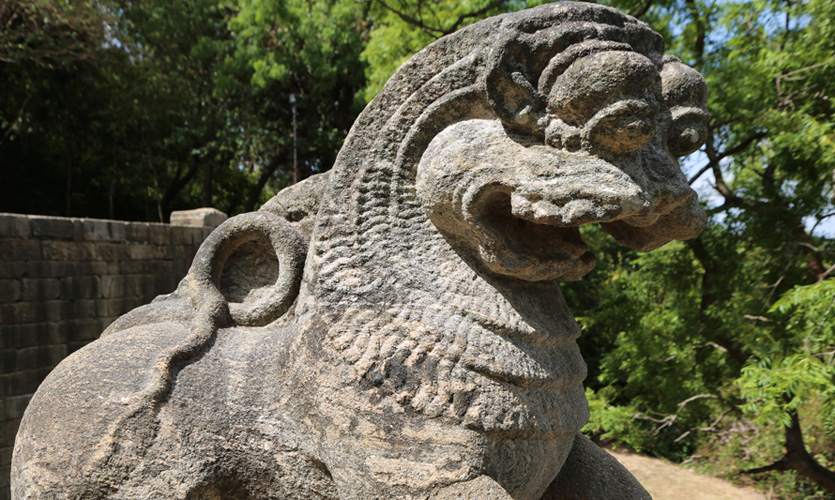
Unearthed too were a number of celadon pottery pieces and more than 1000 Chinese coins. According to historical records, Sri Lanka has been highlighted as a land rich in natural resources, which attracted traders from foreign lands. Historical records also state that ties between Sri Lanka and China date back to 429 AD where two monks have travelled to China to establish the Chinese Buddhist clergy community there. During the fifth century, a Chinese Buddhist monk has visited Sri Lanka thus justifying stronger cultural and religious relations between the two countries.

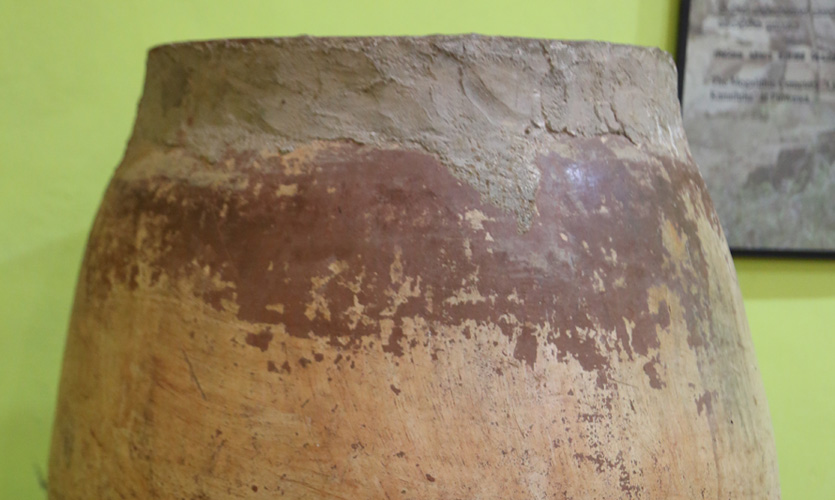
During the reign of King Buvanekabahu I, the Chinese were interested in taking away the Tooth Relic and several other Relics of the Buddha. But in place of these Relics, it has been mentioned that the King pleased them with other treasures. Records also suggest that the Chinese may have visited Yapahuwa to worship and show their respect towards the sacred Tooth Relic.
The Kandyan dancers
As mentioned earlier, the Decorated Staircase has some unique architectural elements, highlighting the significance of the then era. It has been mentioned that King Buvanekabahu I wanted it to be quite attractive since he wanted to establish Yapahuwa as a capital city. When taking a closer look at the dancers, it is quite evident that almost all dancers have Indian dance styles. One of the dancers have a posture with a close resemblance to that of Nataraja – a depiction of Hindu God Shiva as the cosmic ecstatic dancer. Another three dancers show the traditional ‘Leekeli’ dance which is also influenced by Indian culture. Quite interestingly several dancers also show modern gymnastic dance styles. In addition to that, those playing drums and other instruments are both males and females who are elegantly clad.
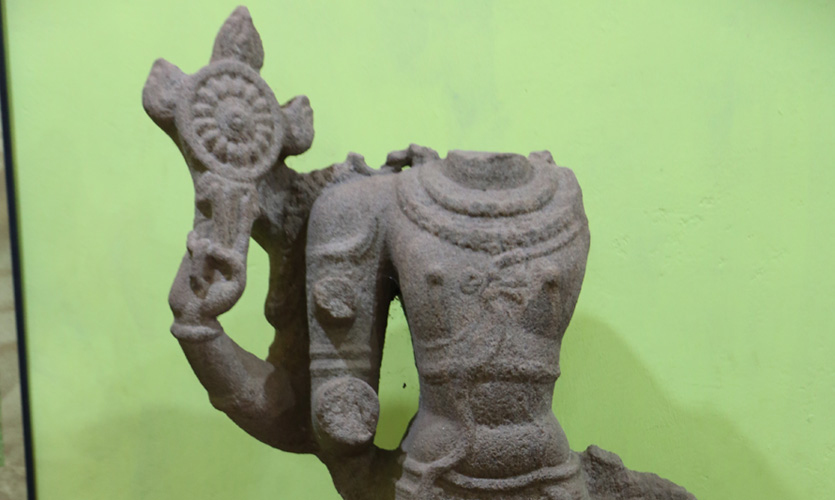

Ancient Burial site
Just a few kilometres away from the Yapahuwa temple, there is an ancient burial site dating back to the Megalithic period. Situated in the Pinwewa area in close proximity to the Deduru Oya, this burial site proves the existence of the pre-historic man. Excavation work conducted by the Central Cultural Fund has proven that this ancient burial site and the Yapahuwa city have very close connections. Historical records state that early civilisations could be dated back to the Stone Age.
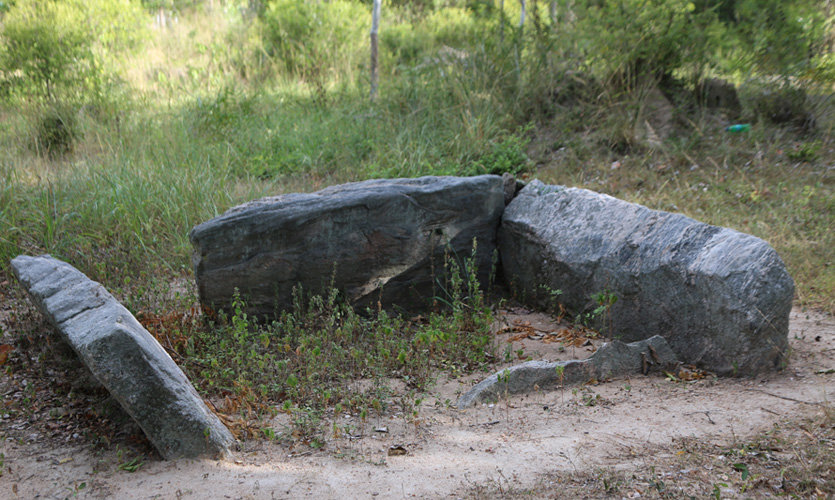
Interesting features about early burial systems could be identified when observing this site. Close to 100 tombstones were found when excavations commenced back in 1957 but today you can see only three or four of the remains. It has been observed that many of the tombstones were placed in the Cist Burial method while others were found in close resemblance to the Urn Burial system as well.
But sadly, this burial site has not been preserved and there is no indication of its existence. During our visit we too had to seek the assistance of residents to reach the site. The cists haven’t been preserved and if you happen to visit the place, they would easily be mistaken for a few slabs of rock lying on the ground. Therefore such ancient sites of pre-historical importance need to be preserved for future generations.
Pictures by Zeeshan Akram Jabeer
The Department of Archaeology and the Central Cultural Fund are conducting further excavations to find out more evidence of early civilisations.
11 Comments
Chindika says:
Jul 31, 2017 at 02:36 pmThanks to the authors of the report on this archaeological 'gem'. We too enjoyed the beauty of the place recently and we highly recommend it to all. However, it was disappointing to see that the historical aspect of the site has been somewhat overtaken by the adjoining temple. Particularly annoying was the sound of the loud, loud speakers that promote donations to the temple. The sound disrupts the informative narrative by the staff of archaeological department staff at this very interesting site. Hope the authorities could look into it and make the site more peaceful for the visitors.
Siri de Silva says:
Aug 02, 2017 at 10:25 pmThe department of Archaeology was started in 1890.You mention Bell making a finding when Commissioner in 1810 He was born in1851
K M N says:
Aug 03, 2017 at 11:00 amImage_6dd7db3882 is not of a dancer who resembles Lord Nataraja but rather a statue of the Hindu God Vishnu. This is especially clear from the Sudarshana Chakra which is being held in his right hand.
Sanda Kelum says:
Aug 03, 2017 at 10:03 pmHope you guys will soon do a story on The Fallen Kingdom of Ya(ha)pa(lana)hoowa. You will surely unearth wads of currencies from both Chinese and Indian sources that keep the jesters in good humor as they go about undoing the Lanka kingdom. Don;t forget to interview uncle Ravi on his bond with the cosy nook at the pinnacle .
Lionel Fernando MD says:
Aug 05, 2017 at 05:05 amFor me, a great bit of information.Even though I lived in Negombo, never got a chance to visit Yapahuwa. Whole presentation including excellent photography and commentry has enhanced my information about history of Sri lanka. Thank you all very much indeed!!! Wish you all well.
SALINDA DE SILVA says:
Aug 05, 2017 at 09:02 pma very interesting piece. we wish you all good luck to cover as many of our forgotten sies and educate the public on the rich culture of yore which have lost it is sad to note in a country that boasts of such a rich heritage , we pay a tuppence to enter our museum, and i am sure the maintenance and upkeep of all these must from handuts from govt. there must be wakep call like what u have made here to educate the presant generation on the value and importance of preserving these for future generations
Chris Duff-Tytler says:
Aug 07, 2017 at 04:06 amGreat to read and see pictures of ancient cities, that are being rediscovered, in my Birth Country, thanks for letting the world to know about the distinguished past, and great architecture, that has stood the centuries. The use of Water resources has and always been a great resource of engineering, in the Ancient cities of Anuradhapura, and the famous Sigiriya, always fascinated me, from our school days, climbing those perilous, stairway to the TOP of Sigiriya. Great memories
Ashantha says:
Aug 09, 2017 at 01:12 pmGreat Story, Thank you.
garawi says:
Aug 11, 2017 at 02:56 pmVery interesting article. Thank you. I have been to Yapahuwa as child of ten years when my father worked in Anuradhapura. My recollection is only the steep step . And yet again I went there in 2012 but never climbed them. Now I see that there is much to see once you are up there . As somebody else has pointed out the period H.C.P.Bell was the Archaeological Commissioner , from 1810-1811 , is not correct, Ceylon was taken over by the British only four years later,in 1815 !
Geewananda says:
Aug 17, 2017 at 01:02 amChandika wrote about the noise level. I couldn't agree more, and this goes for many, many places of worship. Recently, we visited Anuradhapura. The moment we got out of the vehicle to go to Sri Maha Bodhi, we were overwhelmed by some guy singing over a loudspeaker. Granted it was a "bathi gee", I was still surprised that that level of disruption is allowed in the holly city at that hour - around 8 PM. Once at the Ruwanveli Sthupa, we realized where it was coming from. It was a young monk with a microphone, inside one of the shrine rooms filled with devotees observing "sil". He was leading a local tour group in the "sing along", and appeared to be mesmorized by his own voice coming over the speaker despite being drenched in sweat in the stifling heat in the crowded room turned into a torture chamber not a shrine room. Unfortunately, this guy did not realize his cacophony is disrupting the tranquility of that serene site and insulting the people who were trying to meditate. You would think the authorities will put a stop, wait for this: in the Dalada Maligawa new temple, there was this guy talking at the top of his voice on his phone. I gave him the hand sign to lower the voice. He covered the phone and told me that he is an authoritative figure at the temple and is on the phone with the minister, and I should mind my own business. I asked him to give me the phone as I went to school with the minister (true) so that I can recommend to give him an office to conduct business.
Dr Rohan H Wickramasinghe says:
Aug 25, 2017 at 11:16 pmWhen I was at the Dalada Maligawa some time back a man (possibly a tour guide) came in and pushed some elderly folk aside saying (in Sinhala) 'Make way, some tourists are coming'!